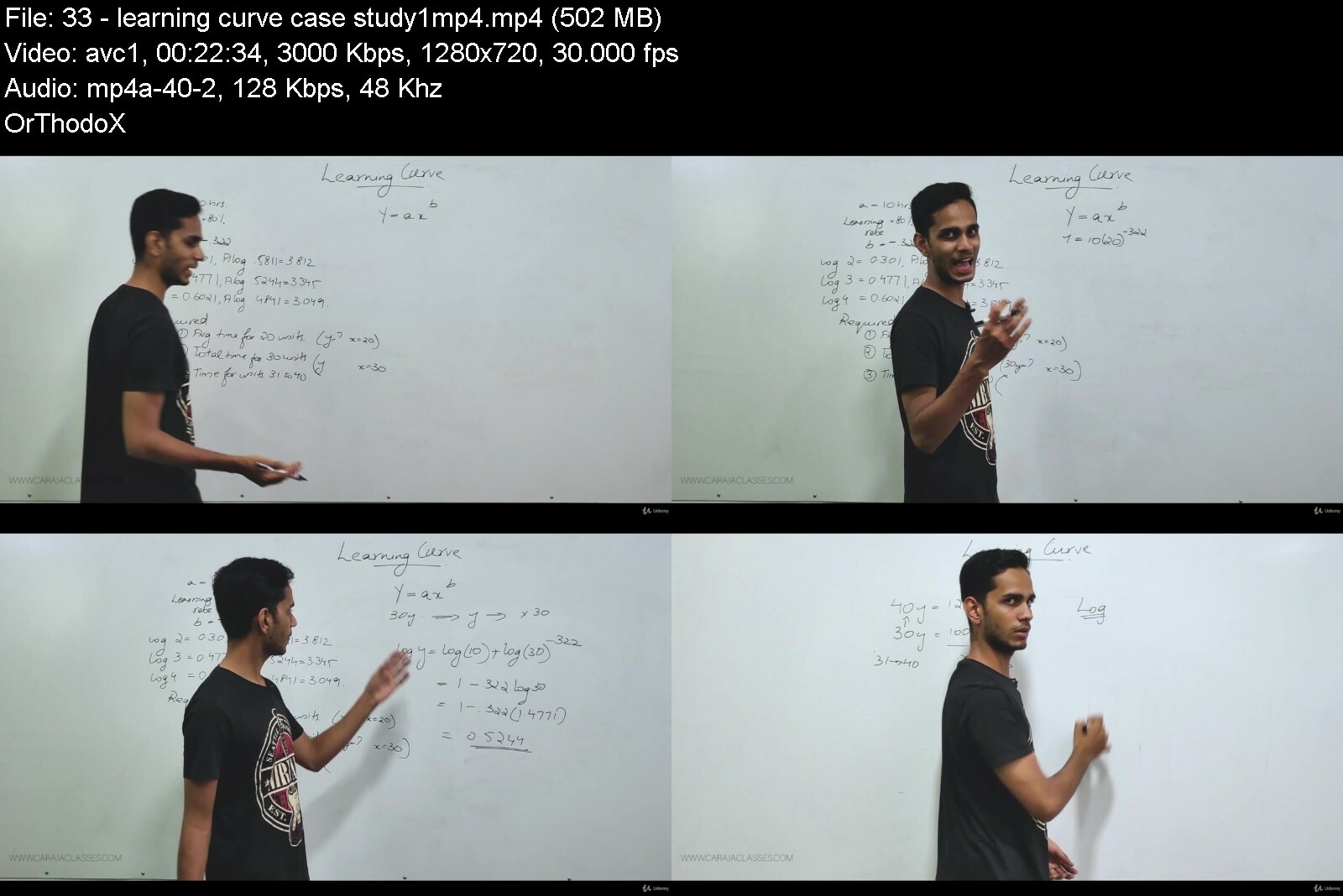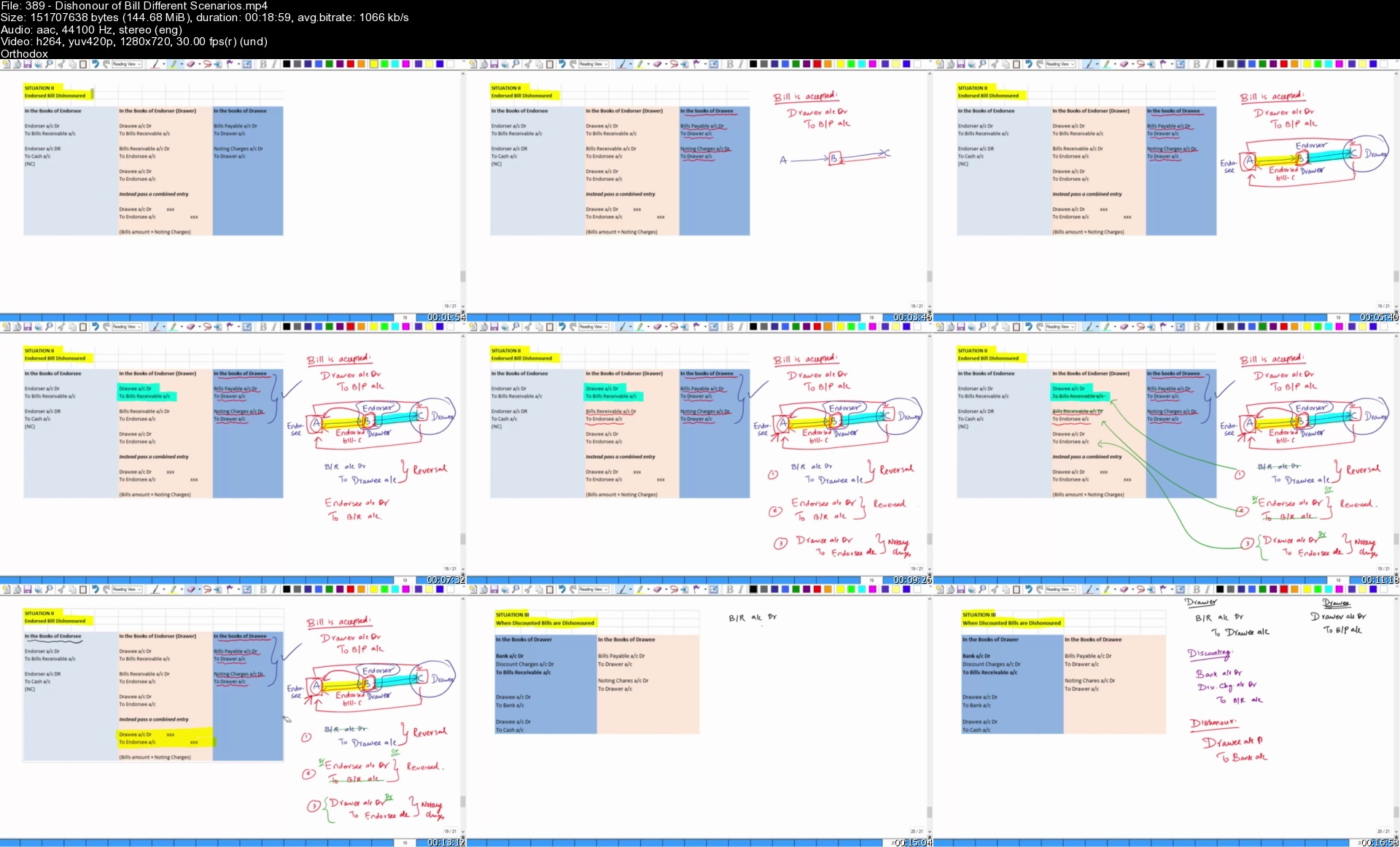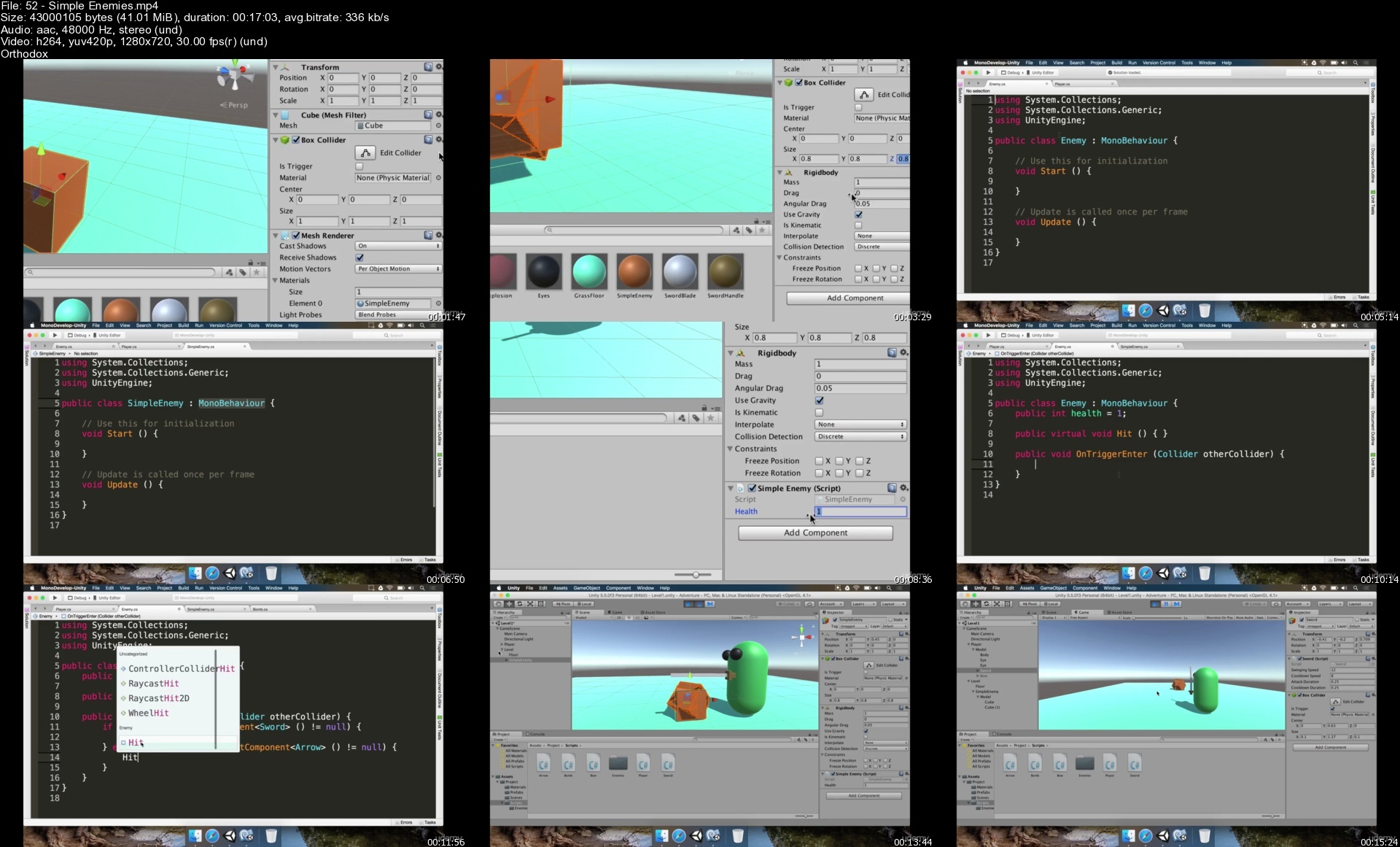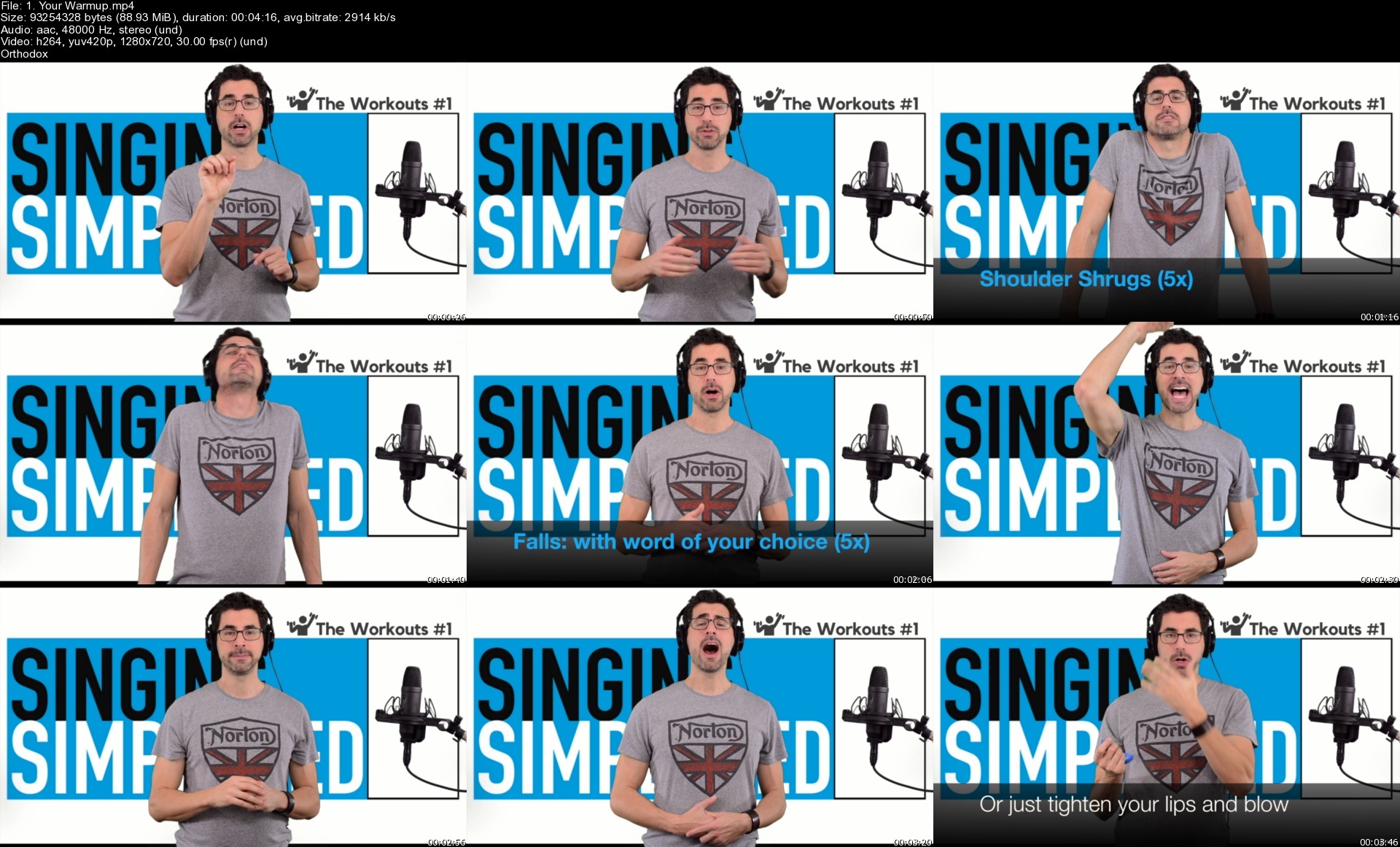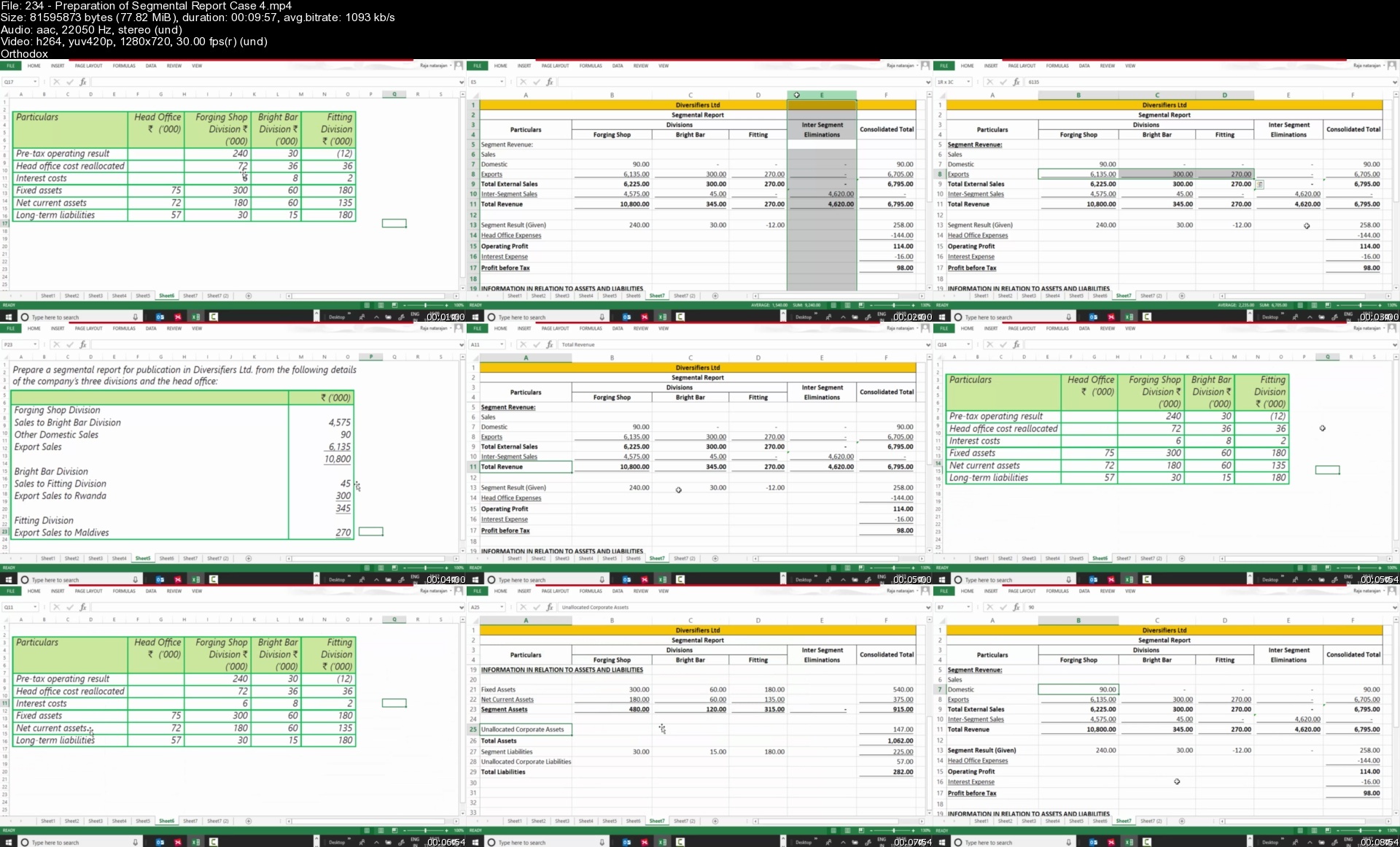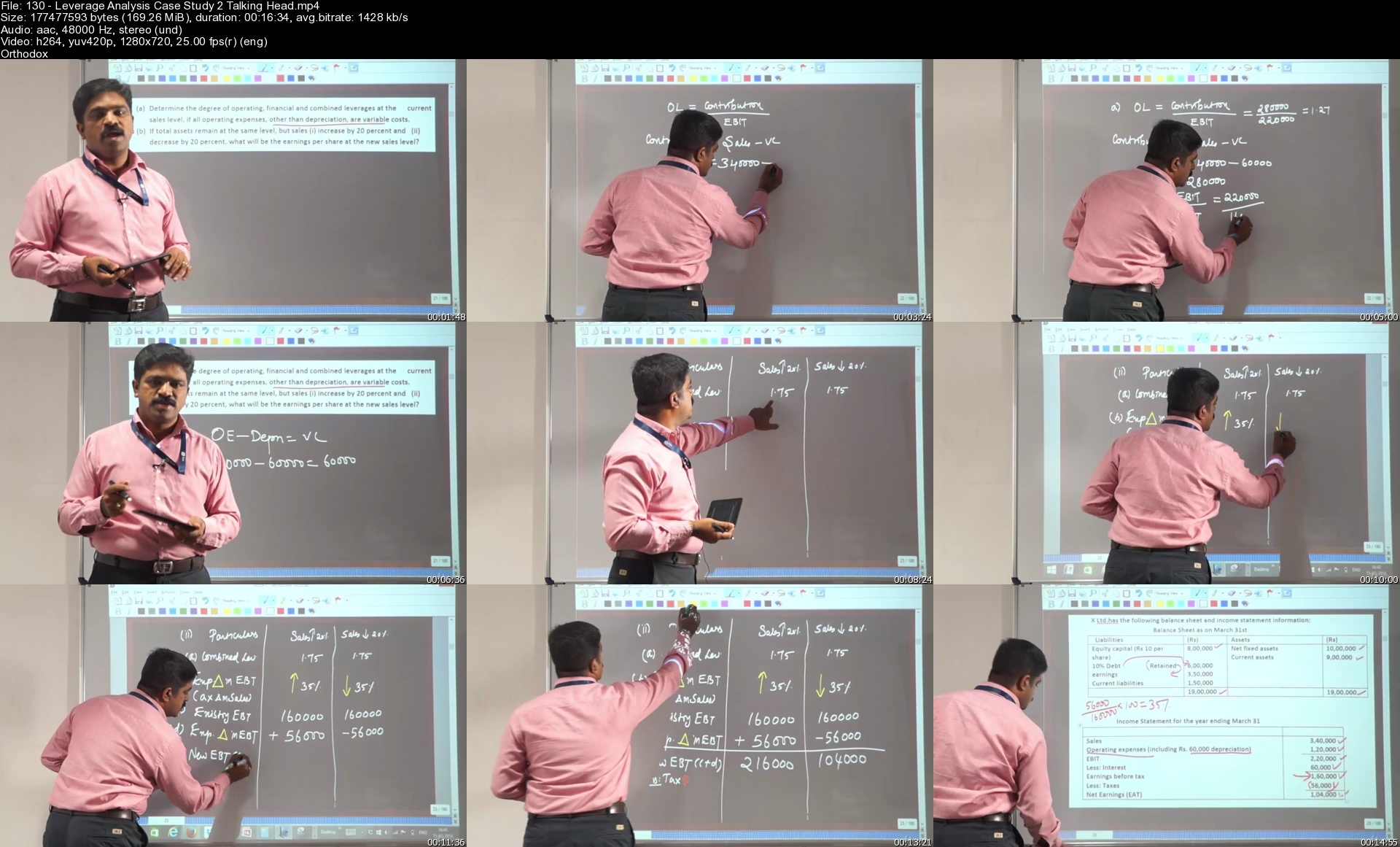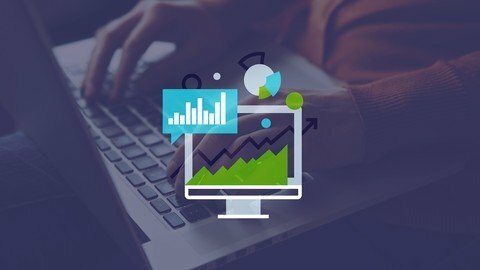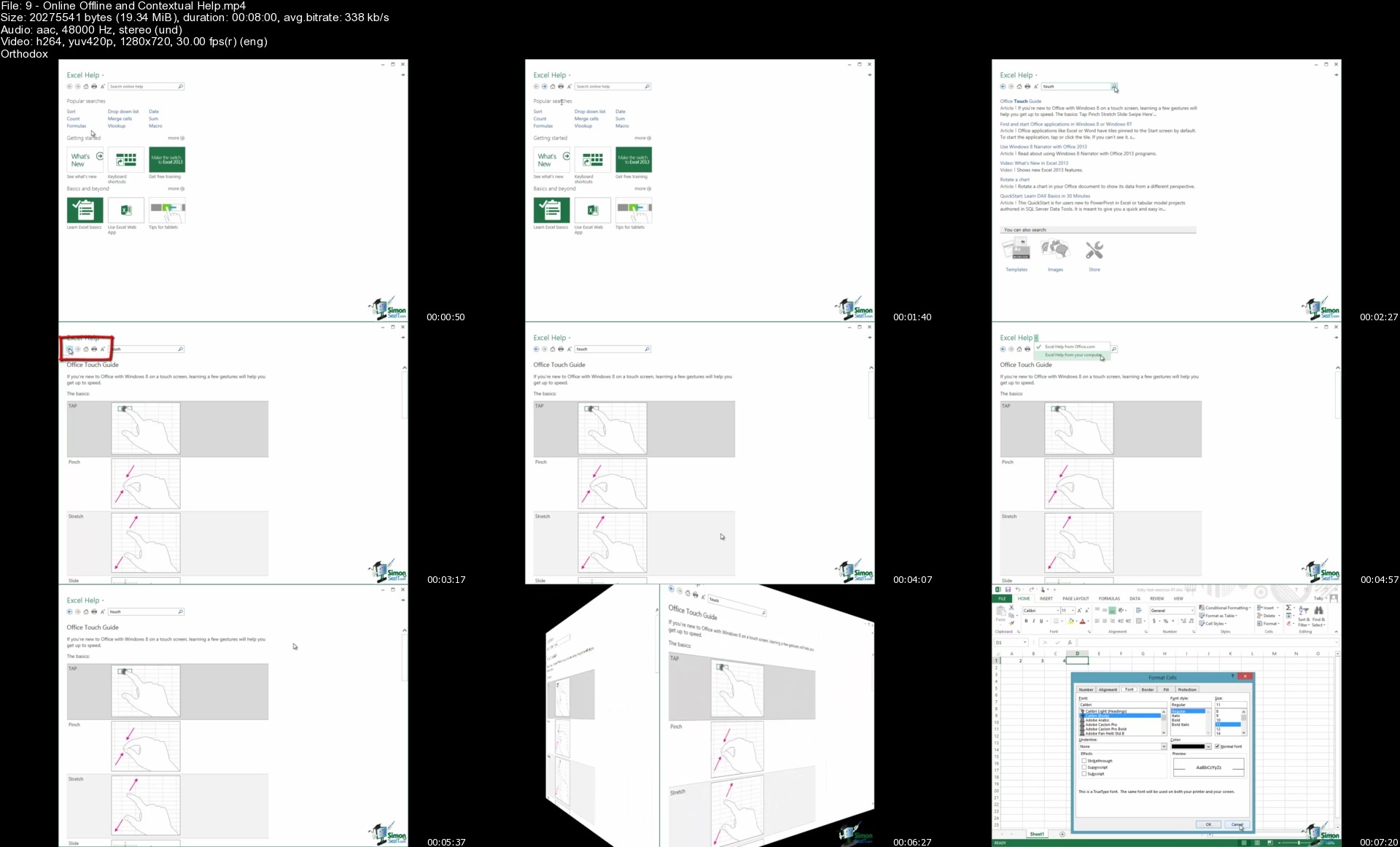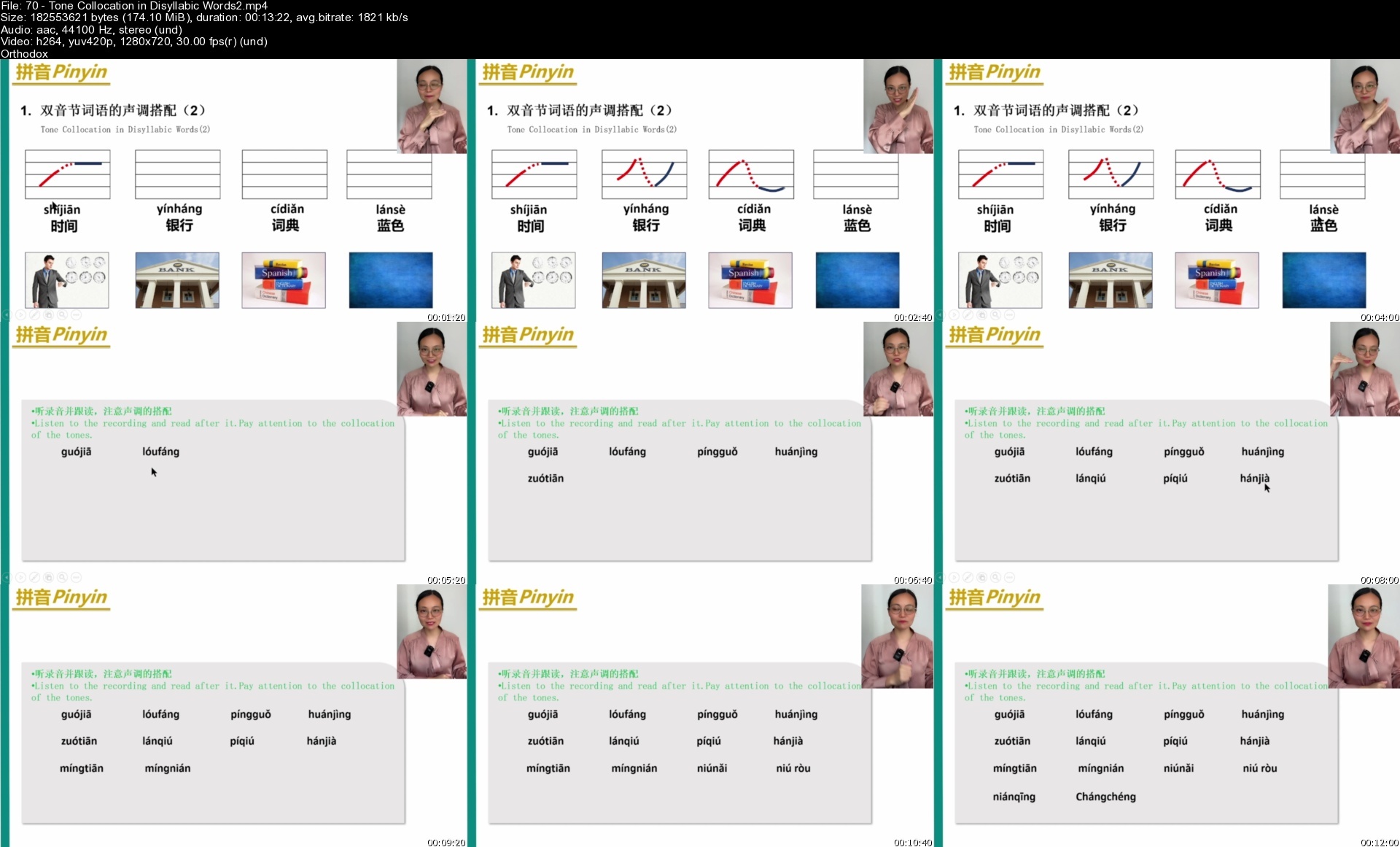Web Developer Fundamentals: Newbie To Pro Web Bootcamp!
Web Developer Fundamentals: Newbie To Pro Web Bootcamp!
Last updated 9/2021
MP4 | Video: h264, 1280x720 | Audio: AAC, 44.1 KHz
Language: English | Size: 12.32 GB | Duration: 54h 35m
The 12 must have web programming courses to help you become the ultimate web developer. Includes 50+ hours of training.
What you'll learn
Create and manage websites
Learn to create websites using a wysiwyg HTML editor
Learn Basic HTML & CSS
Learn how to develop using PHP and MySQL
Advanced web development languages including JavaScript, jQuery and XML
Advanced programming techniques
Dozens of code examples to download and test
Learn how to create responsive websites using the Bootstrap framework
11 optional quizzes with over 300 questions to test what you've learned
Learn essentials for AngularJS
Put their skills into practice with a real Python project
What is Python and why was it created.
How Python fits into the diverse ecosystem of programming languages.
The basic data types in Python - Strings, Integers, Floats, and Boolean
The basic data types in Python - Strings, Integers, Floats, and Boolean
All about Pythons built-in functions
How to debug errors in Python
How Variables and Functions work in Python
How to use IF-Else Statements in Python
All about storing complex data, including Lists and Dictionaries
How to install Python locally
How to write your first script in Python
Requirements
Dreamweaver CC
A text editor
A passion to learn
No prior knowledge required
Description
"WOW! You built that?!" After taking this 50+ hour course, your web developer skills will quickly make you the envy of your friends, create awe among your colleagues, and even help you land a cool, high-paying job as a web developer. Best yet, this collection of courses is available at a fraction of what they'd cost individually. So you get exclusive access to thousands of dollars worth of web development training -- for just $199 - Sweet! This course is a careful compilation of the 12 most essential programming languages that you'll need to accelerate from absolute novice to advanced developer. You'll receive practical learning techniques, along with expert advice and valuable tips, on how to create fully interactive and custom-designed websites and web applications. Step-By-Step Advancement for Developer Success We've helped over 70,000 students become a wiz at web development. We carefully design each course to maximize your understanding and online learning success. You'll receive a combination of stimulating lectures, coding examples with exercise files for real hands-on practice, and an optional quiz to test your learning along the way. The end result? You'll go from total newbie to a totally talented web developer with a set of simple steps that can be completed in one week. 11-Steps to Becoming an Awesome Web Developer Dreamweaver CC for Beginners (Dreamweaver CS6 also included)HTML/CSS Crash for BeginnersHTML5 Essentials for BeginnersPHP Programming for BeginnersMySQL for BeginnersLearn Advanced PHP ProgrammingLearn JavaScript for BeginnersLearn XML Crash CourseBuild a Responsive Website with Bootstrap 3Learn jQuery Crash CourseLearn AngularJS Crash CourseIntroduction to Python (Added August 2020)The introductory Dreamweaver course teaches students with no previous website knowledge on web development how to create a website from scratch. Advancing to the HTML/CSS crash course will teach you basic website building plus the coding required. Expand your developer skills with PHP and MySQL courses - ideal for creating and maintaining dynamic websites. By the time you graduate to the JavaScript, XML Crash Courses, and Bootstrap courses, you'll be able to create fully interactive and engaging websites. DETAILS: 12 courses54 hours of video, over 350 videos12 optional quizzes to test what they've learned consisting of 300+ questions and answersAdditional Bonus: Effective February 2015, the Dreamweaver CS6 course is available at no additional cost. UPDATE: June 2015 AngularJS course added.UPDATE: August 2020 Introduction to Python added What our students are saying:"Very good well balanced web development course. Would highly recommend it". - Jamal Mahamed"Very broad, well presented course". - Marcus Simpson"Instructor presents the material clearly and completely". - William Powers
Overview
Section 1: Introduction to Course
Lecture 1 IMPORTANT: Start Here First and Read!
Section 2: Learn Dreamweaver CC Course: Introduction to Dreamweaver CC
Lecture 2 Acquiring Dreamweaver CC
Lecture 3 WATCH ME: Essential Information for a Successful Training Experience
Lecture 4 Dreamweaver CC Course Exercise Files
Section 3: Dreamweaver CC: Getting Started
Lecture 5 Start Using Dreamweaver CC
Section 4: Dreamweaver CC: The Workspace & Help Tools
Lecture 6 How to Create a New Workspace
Lecture 7 How to Create an HTML Page
Lecture 8 Dreamweaver CC Help
Section 5: Dreamweaver CC: Creating a Website & Web Page Basics
Lecture 9 How to Create a Website
Lecture 10 How to Publish Your Website Online
Lecture 11 Formatting Pages
Lecture 12 Creating a Second Page - Exercise 1
Section 6: Dreamweaver CC: How Hyperlinks Work
Lecture 13 Creating Hyperlinks
Lecture 14 Exercise 2
Section 7: Dreamweaver CC: Customization Tools
Lecture 15 Page Properties
Lecture 16 Learning CSS
Section 8: Dreamweaver CC: Previewing Pages
Lecture 17 Previewing Pages in Browsers
Section 9: Dreamweaver CC: Panels
Lecture 18 Using Panels
Section 10: Dreamweaver CC: Working with Text
Lecture 19 Adding and Styling Text
Lecture 20 Formatting Text, Adding Special Characters
Lecture 21 Formatting Using HTML
Section 11: Dreamweaver CC: Working with Lists
Lecture 22 Working with Lists
Lecture 23 Exercise 3
Section 12: Dreamweaver CC: Checking Spelling
Lecture 24 Checking the Spelling
Section 13: Dreamweaver CC: Introduction to CSS
Lecture 25 Introduction to CSS
Lecture 26 Fundamentals of CSS
Lecture 27 CSS Designer Panel
Section 14: Dreamweaver CC: CSS Style Sheets
Lecture 28 CSS Style Sheets
Lecture 29 Exercise 4
Section 15: Dreamweaver CC: Images
Lecture 30 Images in General
Lecture 31 Photographic Images
Lecture 32 Background Images
Lecture 33 Exercise 5
Section 16: Dreamweaver CC: Links
Lecture 34 Inserting Links
Lecture 35 Absolute Links
Lecture 36 E-mail Links, Adding Links to Graphics
Section 17: Dreamweaver CC: Page Layout
Lecture 37 Laying Out Pages
Lecture 38 Headers and Footers
Lecture 39 Exercise 6
Section 18: Dreamweaver CC: Styling with CSS
Lecture 40 Styling with CSS
Lecture 41 Creating CSS Rules
Lecture 42 Contextual Selectors, Styling Links
Lecture 43 Code Navigator
Lecture 44 Styling a Website's Menu
Lecture 45 Exercise 7
Section 19: Dreamweaver CC: Managing CSS Styles
Lecture 46 Style Management
Section 20: Dreamweaver CC: Managing Your Website
Lecture 47 Managing Sites and Content
Lecture 48 Testing Your Site Before Publishing It
Lecture 49 Publishing Websites
Lecture 50 Exercise 8
Section 21: Dreamweaver CC: Tables
Lecture 51 Using Tables
Lecture 52 Adding Rows and Columns, Adjusting Width and Height, Merging Cells
Lecture 53 Exercise 9
Section 22: Dreamweaver CC: More About the Workspace, Code View
Lecture 54 More About the Workspace
Lecture 55 Working With Codes
Section 23: Dreamweaver CC: Find and Replace
Lecture 56 Find and Replace
Section 24: Dreamweaver CC: Page Layout Tools
Lecture 57 Page Layout Tools
Section 25: Dreamweaver CC: Media Queries
Lecture 58 Media Queries
Lecture 59 Fluid Grid Layout
Lecture 60 Exercise 10
Section 26: Dreamweaver CC: Inserting Videos
Lecture 61 How to Insert HTML5 Video to a Website
Section 27: Dreamweaver CC: Forms and Fields
Lecture 62 Setting Up Forms and Fields
Lecture 63 More About Fields
Lecture 64 Exercise 11
Section 28: Dreamweaver CC: Behaviors
Lecture 65 Using Behaviors
Section 29: Dreamweaver CC: CSS Transitions
Lecture 66 CSS Transitions
Lecture 67 Exercise 12
Section 30: Dreamweaver CC: More Tips
Lecture 68 Closing
Section 31: HTML & CSS: Introducing HTML
Lecture 69 Course Objectives and Introduction to HTML
Lecture 70 WATCH ME: Essential Information for a Successful Training Experience
Lecture 71 HTML and CSS Course Demo Files
Lecture 72 Setting Up the Environment for Web Development - Demo
Lecture 73 Basic Formatting Tags
Lecture 74 How to Use the HTML Tags - Demo
Lecture 75 Lists, Hyperlinks and Image Tags
Lecture 76 More HTML Tags - Demo
Lecture 77 HTML Tables
Lecture 78 Table and Form Tags - Demo
Section 32: HTML & CSS: Introducing CSS
Lecture 79 Introduction to CSS
Lecture 80 CSS Styles - Demo
Lecture 81 Color Keywords, Text and Fonts
Lecture 82 How to use CSS Style Properties - Demo
Lecture 83 CSS Box Model
Lecture 84 CSS Box Model and How to Manipulate Placement of Elements - Demo
Section 33: HTML & CSS: More HTML and CSS
Lecture 85 Block and Inline Elements; More Tags
Lecture 86 Div Tag - Demo
Lecture 87 New HTML Tags
Lecture 88 Video, Footer and Nav Tags - Demo
Lecture 89 CSS Rule Set, Grouping, Nesting, Pseudo Classes and Pseudo Elements
Lecture 90 CSS Block Model and CSS Popup - Demo
Lecture 91 Position Property
Lecture 92 Designing a Web Site Using the CSS Concepts - Demo 1
Lecture 93 Designing a Web Site Using the CSS Concepts - Demo 2
Lecture 94 Advanced CSS
Lecture 95 Navigational Menu - Demo 1
Lecture 96 Navigational Menu - Demo 2
Lecture 97 Navigational Menu - Demo 3
Lecture 98 Course Wrapup
Section 34: HTML5 Crash Course
Lecture 99 HTML 5 Course Overview
Lecture 100 WATCH ME: Essential Information for a Successful Training Experience
Lecture 101 HTML5 Course Demo Files
Lecture 102 Filetype and Charset
Lecture 103 Comparing HTML 5 Doc to HTML 4 Doc - Part 1
Lecture 104 Comparing HTML 5 Doc to HTML 4 Doc - Part 2
Lecture 105 Forms
Lecture 106 Scalable Vector Graphics
Lecture 107 Video and Audio
Lecture 108 Microdata Tutorial
Lecture 109 Math element, MathML, and Canvas
Lecture 110 Conclusion
Section 35: Beginner PHP: Introduction
Lecture 111 Course Objectives and Introduction to PHP
Lecture 112 WATCH ME: Essential Information for a Successful Training Experience
Lecture 113 PHP Beginners Course Demo/Exercise Files
Lecture 114 PHP Development Environment; Whitespace and Comment; Exercise 1
Section 36: Beginner PHP: Variables, Syntax, Operators and Conditional Control
Lecture 115 Variables; Exercise 2
Lecture 116 Echo vs. Print; Single vs. Double Quotes
Lecture 117 Operators
Lecture 118 Controlling the Flow of Execution; Exercise 3
Section 37: Beginner PHP: Defining Loops and Debugging
Lecture 119 Repeating Codes; Exercise 4
Lecture 120 Debugging PHP; Scaffolding Code
Section 38: Beginner PHP: Working with Arrays and Functions
Lecture 121 Arrays; Exercise 5
Lecture 122 Functions - Part 1
Lecture 123 Functions - Part 2; Exercise 6
Lecture 124 External PHP
Lecture 125 Runtime Error Handling
Section 39: Beginner PHP: File Resources, Forms and Superglobals
Lecture 126 Reading and Writing to a File
Lecture 127 Reading a Configuration File; Exercise 7
Lecture 128 Form Processing; Cookies and Sessions Superglobals; Exercise 8
Section 40: Beginner PHP: Database Storage
Lecture 129 Database Storage - Part 1
Lecture 130 Database Storage - Part 2
Section 41: Beginner PHP: Object-Oriented Development
Lecture 131 Object-Oriented Development - Part 1
Lecture 132 Object-Oriented Development - Part 2
Lecture 133 Object-Oriented Development - Part 3
Lecture 134 Inheritance Demo
Lecture 135 Exercise 9
Section 42: Beginner PHP: Security
Lecture 136 Common Threats
Lecture 137 Security Demo and Exercise 10
Section 43: Beginner PHP: PHP Library
Lecture 138 PHP Built-in Constants and Standard PHP Library
Lecture 139 Standard PHP Library Demo - Part 1
Lecture 140 Standard PHP Library Demo - Part 2
Lecture 141 SPL Data Structures and Exception Types
Lecture 142 SPL Data Structures Demo
Lecture 143 SPL Exception Types Demo; Exercise 11
Section 44: Beginner PHP: SQL for Developers
Lecture 144 Relational Database Management Systems and SQL Language
Lecture 145 SQL Statement
Lecture 146 Select Statement Demo - Part 1
Lecture 147 Select Statement Demo - Part 2
Lecture 148 Table Joins and Union
Lecture 149 Joins Demo
Lecture 150 Insert, Update and Delete Commands; Aggregate Functions
Lecture 151 Queries and Store Procedure
Section 45: Beginner PHP: Design Pattern
Lecture 152 Design Pattern Categories
Lecture 153 Singleton Pattern Demo
Lecture 154 Observer Pattern Demo
Section 46: MySQL: Introduction
Lecture 155 Course Outline and Intro to MySQL and Database
Lecture 156 READ ME: Essential Information for a Successful Training Experience
Lecture 157 MySQL Architecture and Installation of MySQL
Lecture 158 Installation Demo - Part 1
Lecture 159 Installation Demo - Part 2
Section 47: MySQL: Database Design
Lecture 160 Database Design
Lecture 161 MySQL Workbench Download
Lecture 162 Database Table and Constraints
Lecture 163 Database Designing and Normalization - Part 1
Lecture 164 Database Designing and Normalization - Part 2
Lecture 165 Storage and Data Types
Lecture 166 Data Types Demo
Lecture 167 ACID and Transactions
Lecture 168 Locks, Deadlocks, Isolation Levels and Logging
Lecture 169 Isolation Levels and Locking Demo
Lecture 170 Locking Mechanism Demo and MySQL ACID Support
Section 48: MySQL: Administration
Lecture 171 Responsibilities of a Database Administrator
Lecture 172 Creating a User and Limiting Access to a Database; Basic Table Maintainance
Lecture 173 Protecting your Database; How to Perform Database Backup
Lecture 174 Performance Monitoring
Section 49: MySQL: Indexing for Performance
Lecture 175 InnoDB Indexing and Clustered vs. Unclustered Index
Lecture 176 Query and Where Clause
Lecture 177 Impact of Indexing on Database Performance
Lecture 178 Performance Optimization
Section 50: MySQL: SQL for Developers
Lecture 179 Char vs. Varchar Data Types; Create, Alter and Drop Keywords; Views and Triggers
Lecture 180 Data Definition Language; How to Create Database Objects
Lecture 181 SQL Select Statements
Lecture 182 SQL Select Statements Demo
Lecture 183 Joins
Lecture 184 Combining Related Table Using Joins
Lecture 185 Insert, Update and Delete Commands
Lecture 186 Insert, Update, and Delete Commands Demo
Section 51: MySQL: Query Analysis and Optimization
Lecture 187 Query Optimization
Lecture 188 Query Optimization Demo
Section 52: MySQL: Data Replication
Lecture 189 Database Replication
Lecture 190 Setting Up Replication in MySQL
Lecture 191 Data Encryption
Lecture 192 Column-Level Database Encryption Demo
Lecture 193 High Availability
Lecture 194 Course Wrap-up
Section 53: Advanced PHP: Introduction to PHP Advanced Course
Lecture 195 Course Objectives; Review of the Basics - Part 1
Lecture 196 WATCH ME: Essential Information for a Successful Training Experience
Lecture 197 PHP Advanced Course - Demo Files
Lecture 198 Review of the Basics - Demo 1
Lecture 199 Review of the Basics - Part 2
Lecture 200 Review of the Basics - Demo 2
Lecture 201 Review of the Basics - Part 3
Lecture 202 Review of the Basics - Demo 3
Section 54: Advanced PHP: Functions, Date and Time, Debugging and Logging
Lecture 203 Code Reuse, Feeding a Function, Return Data from a Function, Pass-by-Value
Lecture 204 Call-by-Value vs. Call-by-Reference - Demo
Lecture 205 Date and Time Manipulation
Lecture 206 How to Manipulate Date and Time - Demo
Lecture 207 PHP Built-in Constants, Debugging PHP, and Application Logging
Lecture 208 Debugging and Logging PHP - Demo 1
Lecture 209 Debugging and Logging PHP - Demo 2
Section 55: Advanced PHP: Strings, REGEX, Runtime Error Handling, and File Resources
Lecture 210 String Manipulation and Regular Expressions
Lecture 211 String Manipulation Functions - Demo
Lecture 212 Regular Expression Functions - Demo
Lecture 213 Runtime Error Handling
Lecture 214 Runtime Error Handling using PHP Exception Handling Mechanism - Demo
Lecture 215 Manipulating Files with PHP
Lecture 216 Reading and Parsing Data in Comma Separated Value Format - Demo
Section 56: Advanced PHP: Database Access, Design Patterns, Mail Function, PEAR and cURL
Lecture 217 Database Storage
Lecture 218 Database Connectivity - Demo
Lecture 219 Design Patterns
Lecture 220 Mail Function
Lecture 221 Retrieving and Sending an E-mail using a PHP Function - Demo
Lecture 222 Send E-mail using Simple Mail Transfer Protocol - Demo
Lecture 223 PHP Extension and Application Repository
Lecture 224 PHP Extension and Application Repository - Demo
Lecture 225 Client URL
Lecture 226 Basic cURL - Demo
Lecture 227 Login to a Website and Post Status Update using cURL- Demo
Lecture 228 Webscraping using cURL - Demo
Section 57: Advanced PHP: Web Services
Lecture 229 Simple Object Access Protocol
Lecture 230 NU SOAP Library - Demo
Lecture 231 Web Services Description Language
Lecture 232 Benefits of using WSDL - Demo
Lecture 233 Developing Web Services using SOAP Protocol - Demo
Section 58: Advanced PHP: Introspection and Reflection
Lecture 234 Introspection and Reflection
Lecture 235 Introspection API - Demo
Lecture 236 Reflection API - Demo
Section 59: Advanced PHP: Smarty Template
Lecture 237 Smarty Templates
Lecture 238 Smarty Template Engine for PHP - Demo 1
Lecture 239 Smarty Template Engine for PHP - Demo 2
Section 60: Advanced PHP: Sessions
Lecture 240 Sessions
Lecture 241 PHP Session Mechanism - Demo
Section 61: Advanced PHP: PHP Framework
Lecture 242 CakePHP, Yii, Zend and Codelgniter
Section 62: Advanced PHP: Best Practices and Security
Lecture 243 Best Practices
Lecture 244 Use of Encryption - Demo
Section 63: Advanced PHP: Conclusion
Lecture 245 Wrap Up
Section 64: JavaScript: Introduction
Lecture 246 Course Objectives
Lecture 247 WATCH ME: Essential Information for a Successful Training Experience
Lecture 248 JavaScript Course Demo File
Lecture 249 Basic Setup
Section 65: JavaScript: Primitive Data Types, Strings, Operators, Numbers, Conditionals
Lecture 250 Primitive Data Types - Part 1
Lecture 251 Primitive Data Types - Part 2
Lecture 252 Operators
Lecture 253 Strings
Lecture 254 Numbers
Lecture 255 Conditional Statements
Lecture 256 Loops
Lecture 257 Nested for Loops
Lecture 258 Arrays
Lecture 259 Multidimensional Arrays
Lecture 260 Array Methods
Lecture 261 Looping through Arrays
Section 66: JavaScript: Functions
Lecture 262 Functions
Lecture 263 Scope Functions
Lecture 264 Variable Hoisting Functions
Lecture 265 Declarations and Expressions
Lecture 266 Self-Invoking and Anonymous Functions
Lecture 267 Callback Functions
Lecture 268 Functions that Return Functions
Lecture 269 Closures
Section 67: JavaScript: Objects
Lecture 270 Objects
Lecture 271 Copying Objects
Lecture 272 Objects Functions and This - Part 1
Lecture 273 Objects Functions and This - Part 2
Lecture 274 Constructors and Factories
Lecture 275 The Module Pattern
Section 68: JavaSript: Document Object Model and Course Conclusion
Lecture 276 Creating Elements
Lecture 277 Adding Selectors and Selecting Elements
Lecture 278 Event Handlers and Event Listeners
Lecture 279 Capturing Form Input
Lecture 280 More Selection Options
Lecture 281 Libraries
Section 69: XML: Introduction to XML
Lecture 282 Course Objectives and Introduction
Lecture 283 WATCH ME: Essential Information for a Successful Training Experience
Lecture 284 XLM Course Demo Files
Lecture 285 Creating an XML Document - Demo
Lecture 286 Practical XML
Lecture 287 Document Type Document - Demo
Lecture 288 Chapter 1 Summary
Section 70: XML: Advanced XML Topics
Lecture 289 XML Attributes
Lecture 290 Use of Attributes - Demo
Lecture 291 XML Schema
Lecture 292 Use of Namespaces - Demo
Lecture 293 XML Schema Documents - Demo
Lecture 294 Chapter 2 Summary
Section 71: XML: XSLT
Lecture 295 Extensible Stylesheet Language, XSL Transformation and XPATH
Lecture 296 Providing Presentation Option in the form of XSL for the XML- Demo
Lecture 297 Chapter 3 Summary
Lecture 298 Course Wrapup
Section 72: Introduction to Bootstrap
Lecture 299 What is Bootstrap and Where to Download It
Lecture 300 WATCH ME: Essential Information for a Successful Training Experience
Lecture 301 Bootstrap Course Demo Files
Lecture 302 Hello World Example
Lecture 303 Adding Navigation Elements
Lecture 304 Advanced Features and Controls - Part 1
Lecture 305 Advanced Features and Controls - Part 2
Lecture 306 Testing the Website in Different Devices
Lecture 307 Using Media Class to Add Images and Comments
Lecture 308 Cross Device Nav Bar ; Logo and Toggle Button
Lecture 309 Dropdown & Glypicon
Section 73: Bootstrap: Button Enhancements
Lecture 310 Adding Dropdown and Glyphicon to Buttons; Adding Search Field & Button
Lecture 311 Adding a Login Form
Lecture 312 Adding a Registration Form - Part 1
Lecture 313 Adding a Registration Form - Part 2
Lecture 314 Breadcrumbs, Badges and Bars
Lecture 315 Modal Dialog and Tool Tip
Lecture 316 Bootstrap Validator - Part 1
Lecture 317 Bootstrap Validator - Part 2
Lecture 318 Creating a Data Table and Modifying It using FooTable
Lecture 319 Creating Checkboxes, Radio Buttons and More using Fuel UX
Lecture 320 Themes, CSS Pre-Processors and Redistributions
Section 74: jQuery: Introduction
Lecture 321 Hello World Example
Lecture 322 WATCH ME: Essential Information for a Successful Training Experience
Lecture 323 jQuery Course Demo Files
Lecture 324 Setting Values with Text HTML
Lecture 325 Getting Values with Text HTML
Lecture 326 Selectors
Lecture 327 Events
Lecture 328 Showing and Hiding Effects
Lecture 329 Combining Events with Selectors
Lecture 330 Traversing and Filtering
Section 75: jQuery: Advance Concepts
Lecture 331 Introduction to Advance Features of jQuery
Lecture 332 Drawing and Mouse Position
Lecture 333 Recording Events
Lecture 334 UI Elements
Lecture 335 UI Dialog
Lecture 336 UI Datepicker
Lecture 337 UI SFx
Lecture 338 Plugins
Section 76: AngularJS: Introduction
Lecture 339 What is Angular JS and Creating an Angular App using JSFiddle
Lecture 340 READ ME: Essential Information for a Successful Training Experience
Lecture 341 Data Binding
Lecture 342 Controllers and Creating Simple Apps
Lecture 343 Controllers with Multiple Rows of Data
Lecture 344 Controllers with Scope Binding
Lecture 345 Scope Binding with CRUD Operation - Part 1
Lecture 346 Scope Binding with CRUD Operation - Part 2
Lecture 347 Using Angular in IDE Projects
Section 77: AngularJS: Advanced Topics
Lecture 348 Angular HTTP Service
Lecture 349 Angular Dependencies in Applications
Lecture 350 Combining Binding, Validation, and Directives
Lecture 351 Custom Directives - Part 1
Lecture 352 Custom Directives - Part 2
Lecture 353 Custom Directives With Scope
Lecture 354 Bonus Lecture
Section 78: Python: The Workplace Tech Divide
Lecture 355 Which Side of the Divide Are You On?
Lecture 356 WATCH ME: Essential Information for a Successful Training Experience
Lecture 357 DOWNLOAD ME: Course Exercise Files
Lecture 358 DOWNLOAD ME: Course Project Files
Lecture 359 Beginners Are Welcome
Lecture 360 Course Overview
Section 79: Introduction to Python
Lecture 361 What is Python?
Lecture 362 Python's Comparison to Other Programming Languages
Lecture 363 Examples of Python in the Workplace
Lecture 364 The Easiest Place to Practice Python
Lecture 365 Create an Account Online
Section 80: Python: Basic Data Types
Lecture 366 Python Data Types
Lecture 367 Strings
Lecture 368 Integers
Lecture 369 Floats
Lecture 370 Boolean
Lecture 371 Data Types Exercise
Section 81: Python Built-In Functions
Lecture 372 What is a Built-In Function?
Lecture 373 Where to Look For Built-In Functions
Lecture 374 Most Common Built In Functions
Lecture 375 Built In Functions Exercise
Section 82: Python: Variables and Functions
Lecture 376 Variables and Functions
Lecture 377 Storing Values as Variables
Lecture 378 Comparing Variables with Operators
Lecture 379 Basic Expressions
Lecture 380 Functions
Lecture 381 Commenting
Lecture 382 Variables and Functions Exercise
Section 83: Python: Errors and Debugging
Lecture 383 What is an Error?
Lecture 384 Reading a Stack Trace
Lecture 385 Print Function
Lecture 386 Try and Except
Lecture 387 You Are Not Alone
Lecture 388 Errors Exercise
Section 84: Python Keywords
Lecture 389 Python Keywords
Lecture 390 Common keywords
Lecture 391 Global
Lecture 392 Keywords Exercise
Section 85: If-Else Statements
Lecture 393 Basic Logic
Lecture 394 Syntax and Inline Evaluation
Lecture 395 Value Evaluation
Lecture 396 Complex If-Else Statements
Lecture 397 If-Else Exercises
Section 86: Storing Complex Data
Lecture 398 Advanced Data Types
Lecture 399 Lists
Lecture 400 Dictionaries
Lecture 401 Looping: Lists
Lecture 402 Looping: Dictionaries
Lecture 403 Advanced Data Exercise
Section 87: Python Modules
Lecture 404 Python Modules
Lecture 405 Python Built In Modules
Lecture 406 Importing Modules
Section 88: Installing Python and Modules
Lecture 407 Python Environments
Lecture 408 Mac
Lecture 409 Windows
Lecture 410 IDEs
Lecture 411 Python Idle
Lecture 412 Managing files and folders
Lecture 413 Executing Scripts
Lecture 414 PIP
Section 89: Project: Automate Data Updates For a Spreadsheet
Lecture 415 Project Introduction
Lecture 416 Setting Up Project
Lecture 417 Reading and Writing to Excel Files
Lecture 418 Working with CSV Files
Lecture 419 Dynamic File Paths
Lecture 420 Transform and Validate Transactions
Lecture 421 Transfer and Save Transactions
Lecture 422 Clean Up the Code
Lecture 423 Hardening the Script
Section 90: Course Close
Lecture 424 What's Next?
Complete beginners,Someone who has never coded before,Someone new to web development,Web masters who need to improve their development skills,Students requiring additional knowledge and instruction,Those considering a career in web development,Entrepreneurs looking to develop skills for a lean startup,People looking to learn the Python Programming Language
Homepage












